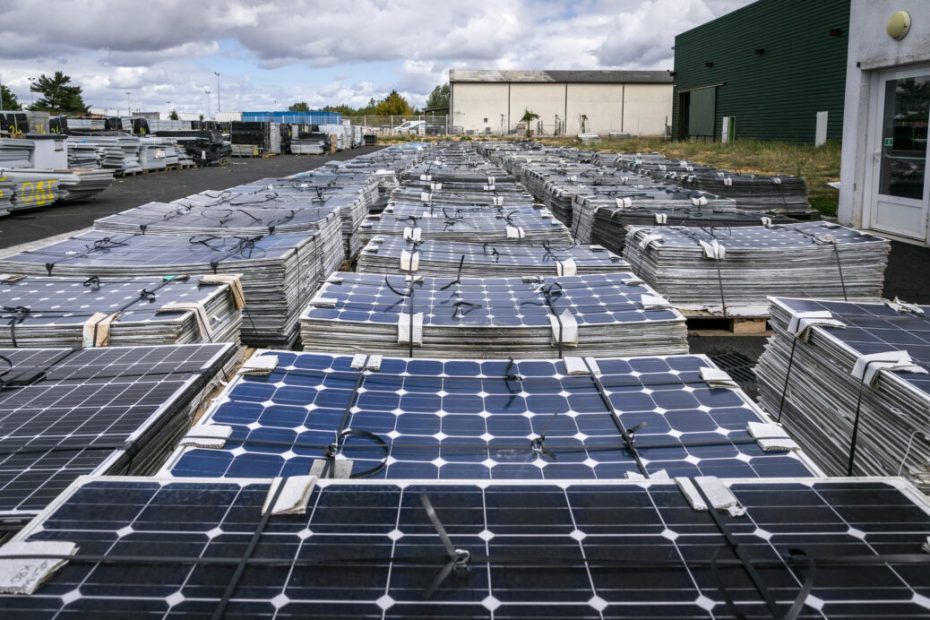A new report from the Australian Centre of Advanced Photovoltaics (ACAP) has recommended a raft of measures for solar panel recycling, including the establishment of waste facilities in five Australian cities by 2027.
The report, Scoping study: Solar Panel End-of-Life Management in Australia, found that the projected cumulative volume of decommissioned solar panels is likely to reach one million tonnes by 2035.
ACAP, which is led by the University of New South Wales (UNSW), found that based on current projections as much as 100,000t of photovoltaic (PV) waste may be generated annually by the end of the decade.
The study, commissioned by Neoen Australia, found that the problem is more pressing than previously thought, and contradicts earlier findings that significant volumes of waste would not appear until at least after 2030.
Initially, the majority of waste solar panels are expected to concentrate in Sydney, Melbourne, Brisbane, Perth, and Adelaide – before PV waste starts growing faster in regional and remote areas from 2030 onwards.
The first wave of increased waste is expected to come from decommissioned rooftop solar panels, and the report said near-term action is needed to boost the levels of recycling and prevent this waste going into landfill.
The authors have called for sites in the five major cities to deal with 5,000 to 10,000 tonnes of waste panels per year, with that volume needing to double at each facility in the next six years.
Those metropolitan facilities are predicted to be able to manage more than 70 per cent of Australia’s solar panel waste, with additional smaller sites in Dubbo/Wellington, Townsville, Newcastle, Murrumbidgee, Central Highlands and Busselton providing a comprehensive nation-wide service.
ACAP Executive Director, Renate Egan, said, “The total material value from end-of-life solar panels is projected to surpass $1 billion by 2035.
“As a result, establishing domestic PV waste management facilities in Australia presents an opportunity for resource recovery. Recycling offers a gateway to reducing landfill, enhancing circular economy initiative, and job creation.
“This report was developed to provide a detailed analysis of the waste volumes and distributions, needed to prepare for future waste from rooftop and large scale solar,” Ms Egan said.
One of the authors of the report, Rong Deng, said that there is economic value in building facilities that are able to properly recycle panels that come to the end of their useful life.
“Solar panels are made of materials like aluminium, glass, silicon, silver, and copper, and they can be recycled. Therefore, panels should be viewed as valuable resources rather than waste. However, more scalable, comprehensive, and cost-effective solutions are needed to deal with large volumes in the coming decade.
“More than 80 per cent of the decommissioned solar panels by 2030 are projected to emanate from small-scale distributed PV systems, attributable to the earlier evolution of Australia’s residential PV market.
“In the next 12 years, we need a clearly defined management framework, accessible collection methods, and new technologies to transform the challenge of end-of-life solar panels into sustainable business opportunities with positive economic, environmental and social outcomes,” Ms Deng said.
The ACAP report advises that the new facilities should be dedicated to full material recovery, focusing exclusively on recycling solar panels through comprehensive processes designed specifically for the purpose, with the aim of achieving higher recycling rates and revenue.
The cost of recycling solar panels currently ranges from $500 and $1,000 per tonne, covering transportation and before accounting for the revenue from sold materials. This estimate assumes that the recycling facilities handle approximately 5,000 tonnes of panels each year.
The major expenses in the recycling process are the capital expenditures required for facility setup and the ongoing labour costs.
The first wave of increased waste is expected to come from decommissioned rooftop solar panels, and the report said near-term action is needed to boost the levels of recycling and prevent this waste going into landfill.
Featured image: Decommissioned solar panels. Courtesy of ACAP.
